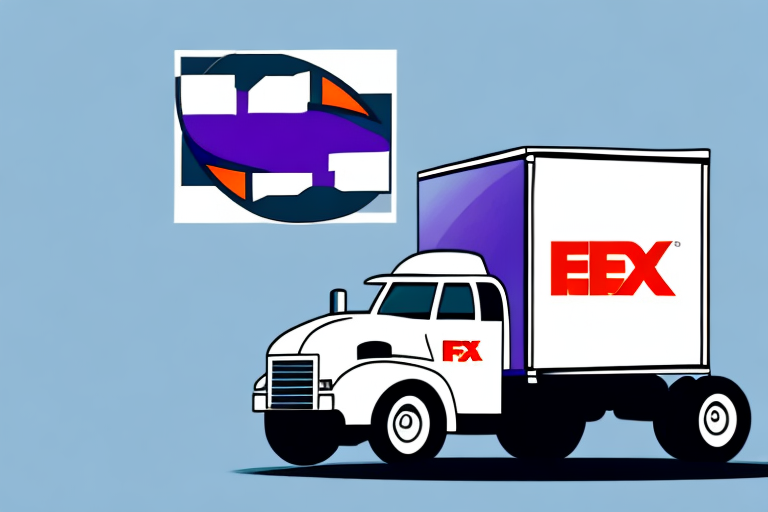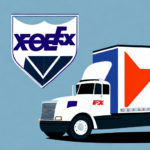FedEx Shipping Freight Rates: An In-Depth Guide
If you’re a business owner or an individual who frequently ships packages and freight, understanding the intricacies of FedEx Shipping Freight Rates is critical. In this comprehensive guide, we’ll cover all the essential details and provide up-to-date information to help you navigate FedEx freight rates effectively.
Understanding FedEx Shipping Freight Rates
What are FedEx Shipping Freight Rates?
FedEx Shipping Freight Rates are the costs associated with transporting large and bulky items using FedEx’s freight services. These rates are essential for businesses and individuals who need to move substantial quantities of goods efficiently and reliably.
LTL vs FTL Freight Rates
FedEx offers two primary types of freight services: Less-Than-Truckload (LTL) and Full-Truckload (FTL). LTL freight rates apply to shipments that don’t fill an entire truck, allowing multiple shipments from different customers to share space. This option is often more cost-effective for smaller shipments. On the other hand, FTL rates are charged for shipments that require a dedicated truck, providing faster transit times and reduced handling, which is ideal for large, heavy, or high-value goods.
Calculating and Factors Affecting FedEx Shipping Freight Rates
How are Rates Calculated?
FedEx Shipping Freight Rates are calculated based on several factors, including the weight and dimensions of the shipment, the origin and destination locations, the distance between them, and the type of goods being shipped. Additionally, FedEx uses a rate-per-mile system that varies depending on the size of the shipment, coupled with a base rate for each pickup and delivery location.
Key Factors Influencing FedEx Shipping Freight Rates
Several key factors influence the cost of FedEx freight shipping:
- Size and Weight: Heavier and larger shipments generally cost more to transport.
- Distance: Longer distances increase the freight rates due to higher fuel and labor costs.
- Type of Goods: Hazardous or fragile items may incur additional handling fees.
- Mode of Transportation: Air freight typically costs more than ground or ocean freight.
- Service Level: Expedited services like same-day or next-day delivery come at a premium.
Understanding these factors can help you anticipate and manage your shipping costs effectively.
Types of FedEx Shipping Freight Rates
Different Rate Types
- Spot Market Rate: Applicable to unscheduled pickups or deliveries, subject to availability and capacity constraints.
- Contract Rate: Offered to regular customers who have signed a service agreement with FedEx, providing discounted rates.
- Volume Rate: Based on the quantity of goods shipped, with discounts applied for larger volumes.
Specialized Rate Options
FedEx also offers specialized rates tailored to specific industries and shipment types. For example, the Healthcare Priority Rate is designed for urgent medical shipments, while the Dangerous Goods Rate applies to hazardous materials requiring special handling and compliance with safety regulations.
Optimizing FedEx Shipping Freight Costs
Getting Accurate Quotes
To obtain an accurate FedEx Shipping Freight Rate quote, provide detailed information about your shipment, including weight, dimensions, pickup and delivery locations, and the desired delivery timeframe. Using FedEx’s online rate calculator can streamline this process.
Tips to Reduce Freight Rates
- Consolidate Shipments: Combine multiple shipments into one larger shipment to benefit from volume discounts.
- Select Slower Delivery Options: Opting for ground or economy services instead of expedited options can significantly reduce costs.
- Utilize Contract Rates: Engage in a service agreement with FedEx to secure lower rates for regular shipments.
- Negotiate Rates: Compare prices with other carriers and leverage this information to negotiate better deals with FedEx.
Implementing these strategies can lead to substantial savings on your shipping expenses.
Negotiating Better Deals
Businesses that ship frequently and in large volumes have greater leverage to negotiate favorable rates with FedEx. Consider working with a freight broker, who can help negotiate lower rates on your behalf by leveraging their relationships and volume discounts.
Managing Freight Rate Expenses
Effective management of freight rate expenses involves maintaining accurate records of all shipping transactions, scheduling shipments in advance to take advantage of lower rates, and continuously reviewing your shipping strategy to identify areas for cost reduction.
Comparing FedEx with Other Carriers
When selecting a shipping carrier, it’s essential to compare FedEx Shipping Freight Rates with those of other major carriers like UPS and DHL. Factors to consider include rate competitiveness, service reliability, delivery speed, and additional services offered. According to a 2023 report by Transport Topics, FedEx remains highly competitive in the freight market due to its extensive network and range of service options.
Navigating Misconceptions and Hidden Fees
Common Misconceptions
There are several misconceptions about FedEx Shipping Freight Rates. One common belief is that FedEx rates are always higher than other carriers, which isn’t necessarily true. FedEx offers competitive pricing, especially for businesses that ship regularly in large volumes. Another misconception is that all fees are transparent, whereas some additional services may incur extra charges.
Avoiding Hidden Fees
- Liftgate Service Fees: Applied when a liftgate is needed for loading or unloading at the pickup or delivery location.
- Residential Delivery Fees: Charged for deliveries to residential addresses instead of commercial locations.
- Reweight and Inspection Fees: Additional charges if the shipment weighs more than initially declared or requires inspection.
- Hazardous Material Surcharges: Extra fees for shipping hazardous or dangerous goods.
To avoid unexpected costs, always review your shipment details and ask FedEx representatives about any potential additional fees before finalizing your shipment.
Technological Innovations Impacting FedEx Shipping Freight Rates
Advancements in technology are continually shaping the landscape of shipping and logistics. FedEx has embraced several innovations to enhance efficiency and reduce costs, which can positively impact freight rates:
- Freight Management Software: Optimizes delivery routes and improves supply chain efficiencies, potentially lowering shipping costs.
- Modern Fleet Technologies: Utilization of fuel-efficient and automated trucks reduces operational costs and delivery times.
- Electronic Tracking Systems: Provide real-time visibility into shipments, enhancing reliability and reducing the need for expedited services.
These technological advancements not only improve service quality but also contribute to more competitive freight rates for customers.
Conclusion
Understanding FedEx Shipping Freight Rates is essential for optimizing your business's shipping efficiency and controlling costs. By leveraging the strategies and insights provided in this guide, you can make informed decisions and utilize FedEx’s services to meet your specific shipping needs effectively. Always stay updated with FedEx’s latest offerings and industry trends to maintain a competitive edge.








